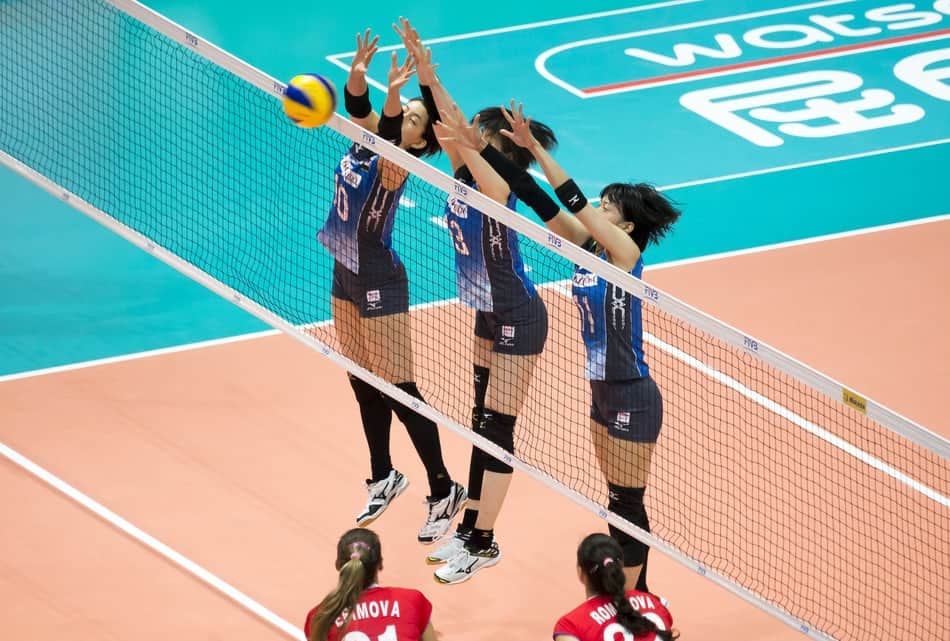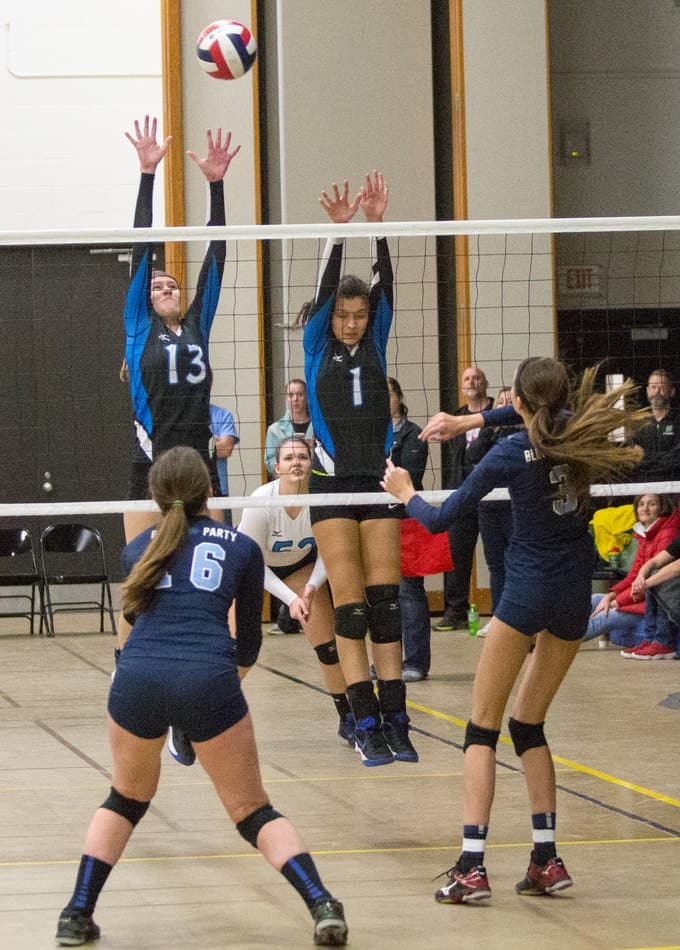It’s very common for casual and recreational players to ask all kinds of questions about the rules in volleyball. Some of these rules can seem very picky and may not seem ideal.
The answer is that yes, it is illegal to block or spike the serve in volleyball. The rules are very clear about this they’re designed that way to promote an overall enjoyable and competitive game.
The rules for volleyball are governed by the FIVB and you can download a copy of them for yourself at this link: FIVB English Rules.
While these are the universal rules used to govern the international level of play, volleyball like many sports has many variations of rules that may be adapted or adjusted. Your league, your school or your club may use or ignore the FIVB rules depending on the governing body of volleyball rules for whichever your local state or country.
Is It Really Illegal To Block The Serve?

Yes, on page 35 of the rules mentioned above, rule 14.5 literally says, “To block an opponent’s service is forbidden.” That makes it pretty clear that the spirit of the rules is to allow each team the chance to begin the rally with a fair service.
An Example of a Real Situation Blocking the Serve
I play at a local church in a family volleyball night a couple of times each month. Recently we had a case where this rule came into play and players got a little upset. I made a video about it to talk through the rules and how I think they apply to this play.
Is It Really Illegal To Attack or Spike The Serve?
Yes in the rules from the FIVB that are linked above, you’ll find on page 34, rule 13.2.4 which says, “No player is permitted to complete an attack hit on the OPPONENT’S service, when the ball is in the front zone and entirely higher than the top of the net.“
An attack is any contact above the height of the net, within the front zone of the court, where the ball is sent to the opponent’s side. So in other words, you can’t touch the ball above the height of the net unless you’re behind the attack line.
Would you like to read more about some of the other serving rules in volleyball? Take a look at our article called: Volleyball Serving Rules: Your Questions Answered.
What If This Rule Was Changed?
Players who are tall or have a great vertical leap may wish that they could ignore this rule, wanting to have the ability to block or attack serves that come so close to the top of the net that they could reach it. But how would that change the game? Let’s take a moment and consider what the FIVB rules are trying to avoid.
Trampling the Spirit of Fairplay
Think back to those early years of volleyball, when you or your child were just trying so hard to serve the ball over the net. That first monumental challenge is a proving ground for everyone who enters the game regardless of age.
When you are just learning the coordination and building the strength to serve the ball consistently over the net, it’s very satisfying to be able to succeed at this and do your part for your team. Many novice volleyball players struggle at the different skills needed throughout the rest of the game and they may avoid situations where they are weak.

But the serve is unavoidable in the casual or recreational game. Everyone has to try to serve as they rotate to take their turn. Remember those days in gym class or those early days of YMCA volleyball?
Now picture that scene with a tall player who can take advantage and time their jump and stuff your serve that was barely going to make it over the net. Just how fair does that seem? Sure, eventually everyone who plays volleyball long enough develops the power and skill that they could serve high and deep if needed, but all of those youth leagues and recreational games would have to put up with this happening over and over unless they made a new “house rule” to stop it.
Volleyball was first invented with the vision of being an inclusive sport for people of all ages, sex, and athletic ability level. The FIVB makes it very clear on their website and in their literature to referees that their vision is to maintain the sport as a fun and exciting game atmosphere to encourage the further growth of the sport.
Changing the Strategy of Serving
We have to consider, if the rule was taken away and you were suddenly allowed to block and/or spike the serve, the serving game would have to change. Young players would have to learn how to hit the ball much higher over the net to keep from getting their serve attacked.
A huge part of the challenge in serving is hitting the most aggressive angle we can to try score on your opponent or at least make it very difficult for them to play the ball. If you suddenly weren’t able to reliably place the ball within the first foot or two above the net, that removes much of the offensive potential from your serving.
The overall effect would be that some of your best serves now would be hit like a freeball, an easy lob at a high height. You may be able to play with spin and placement, but your options would be limited.
Serving is considered an advantage and I believe this would reverse that. It would be a disadvantage, especially at the higher levels of the game, to have to give your opponents something so easy to handle and let them mount whatever attack they would like.
Encouraging Over Aggressive Play
Volleyball is an aggressive sport and when you have competitive athletes and coaches, it becomes VERY aggressive. Good competition drives players to push the boundaries of our expectations. That’s a great and exciting thing about sports!
But there are also areas where those leading the sport should reign in aggression and limit just how volatile the play can become.
We’ve seen changes over the years in American football to do this exact thing. Over my lifetime we’ve had rules changed to limit hitting quarterbacks and then that rule was widened to be any “defenseless” player.
These kinds of rules are good for the sport because we’re fixing a limit to just how far players are allowed to go. Whether in football or volleyball, we want athletes to be able to be competitive without taking to a point of ruining the sport.
Do These Rules Apply To Beach Volleyball As Well?
That’s a fair question because there are several rules that change when you take the game to the sand. But the rules are consistent in this area. It is indeed illegal to block or attack your opponent’s service in beach volleyball as well.

Would you like to learn more about beach volleyball? This article compares the indoor and beach versions of the sport.
Photo credits:
Feature image by Rob Royce: https://creativecommons.org/publicdomain/mark/1.0/
Triple block image by Jeffrey Ng on flickr.com: https://creativecommons.org/licenses/by-sa/2.0/, cropped to zoom.
Double block image by popo.uw23: https://creativecommons.org/publicdomain/mark/1.0/
Beach volleyball image by Funk Dooby on flickr.com: https://creativecommons.org/licenses/by-sa/2.0/, cropped to zoom.
Recent Posts
Athletes, listen up! Do you have a closet full of old jerseys, sweatpants, and tees that you just can't seem to part with? Well, dust them off, because you're sitting on a goldmine of fashion...
You may have heard, or you may have noticed, that there's been a change to the rule about double contact in volleyball. In 2022, an experimental rule change began to be implemented, where the double...
